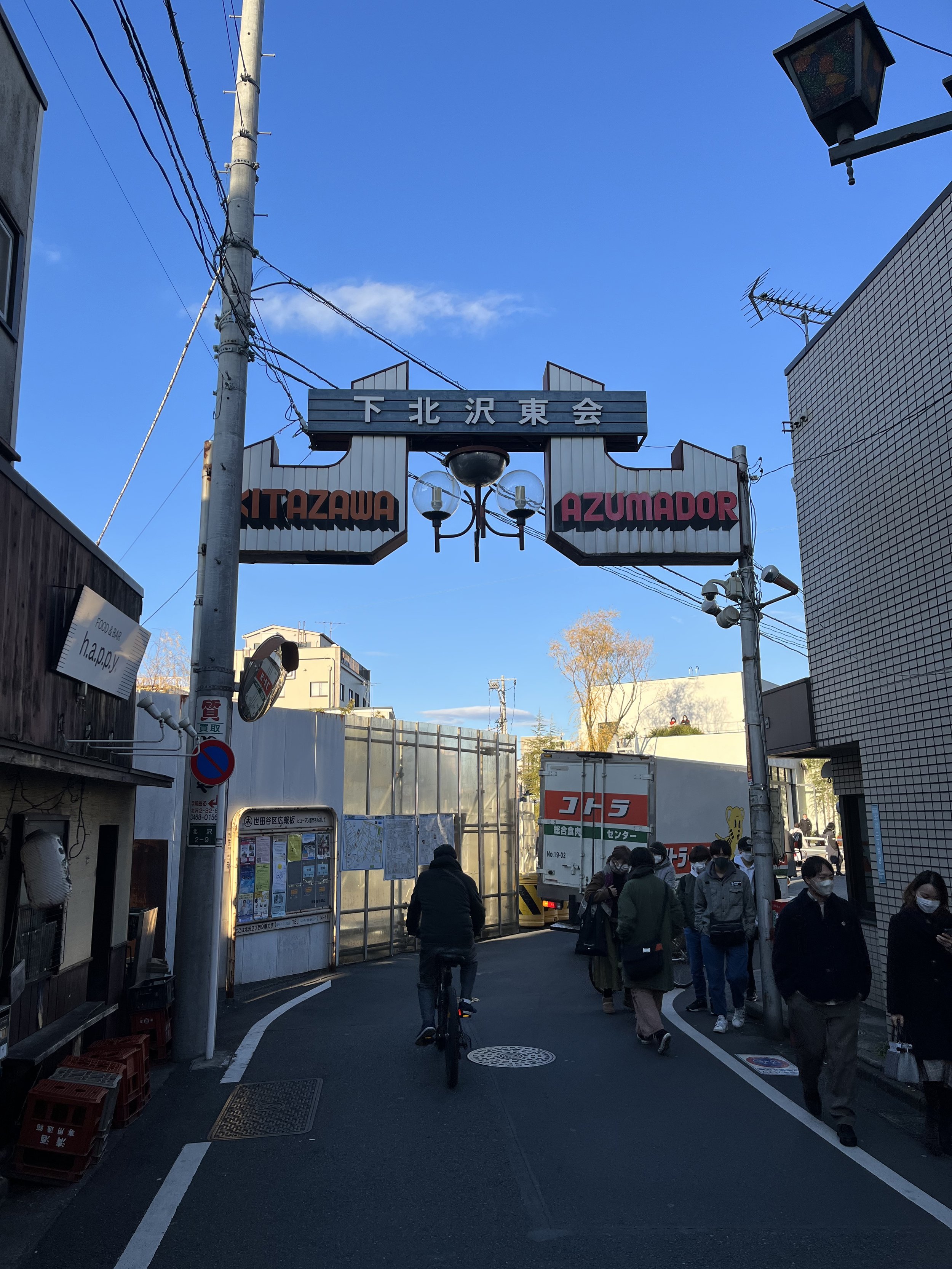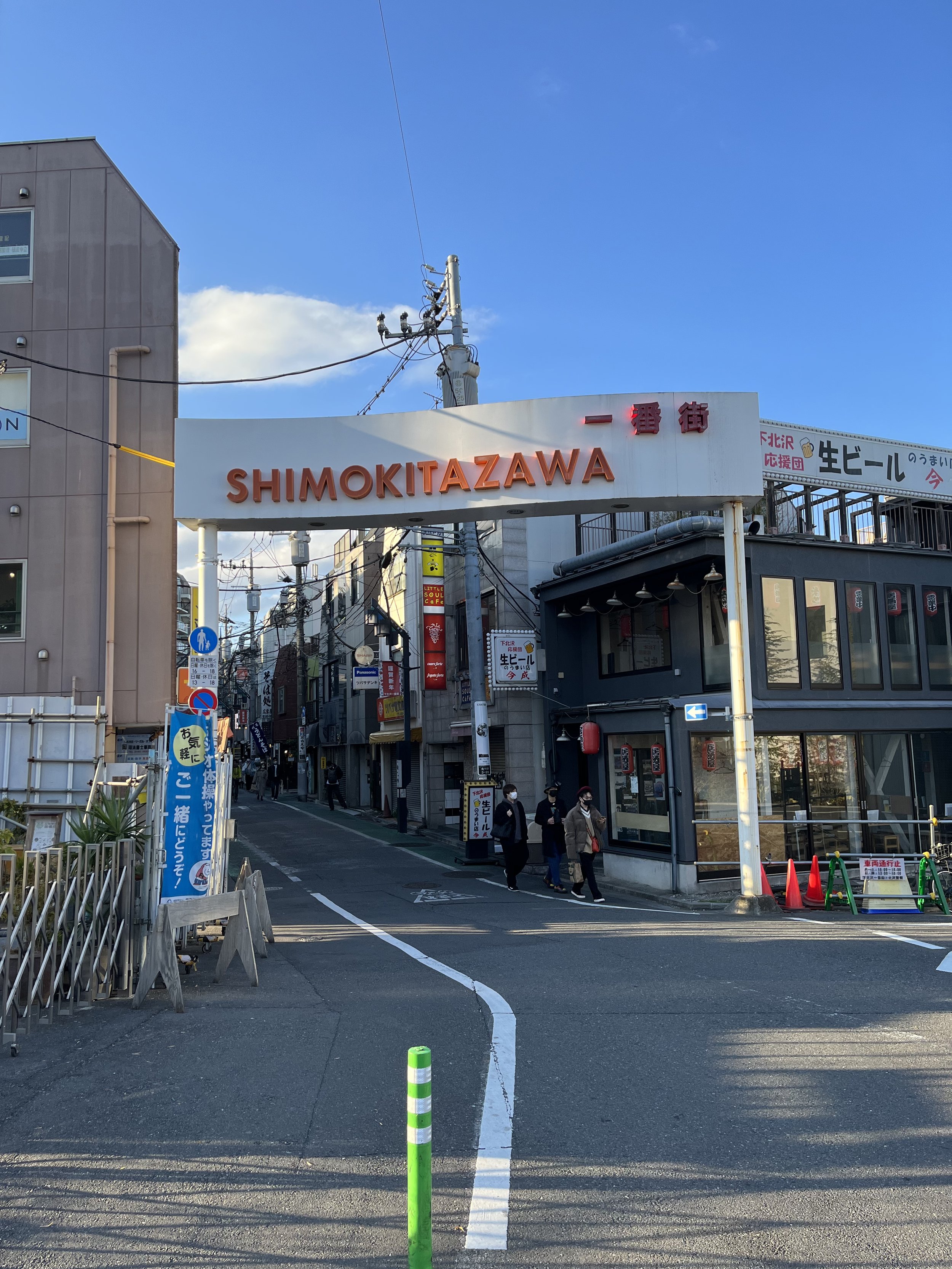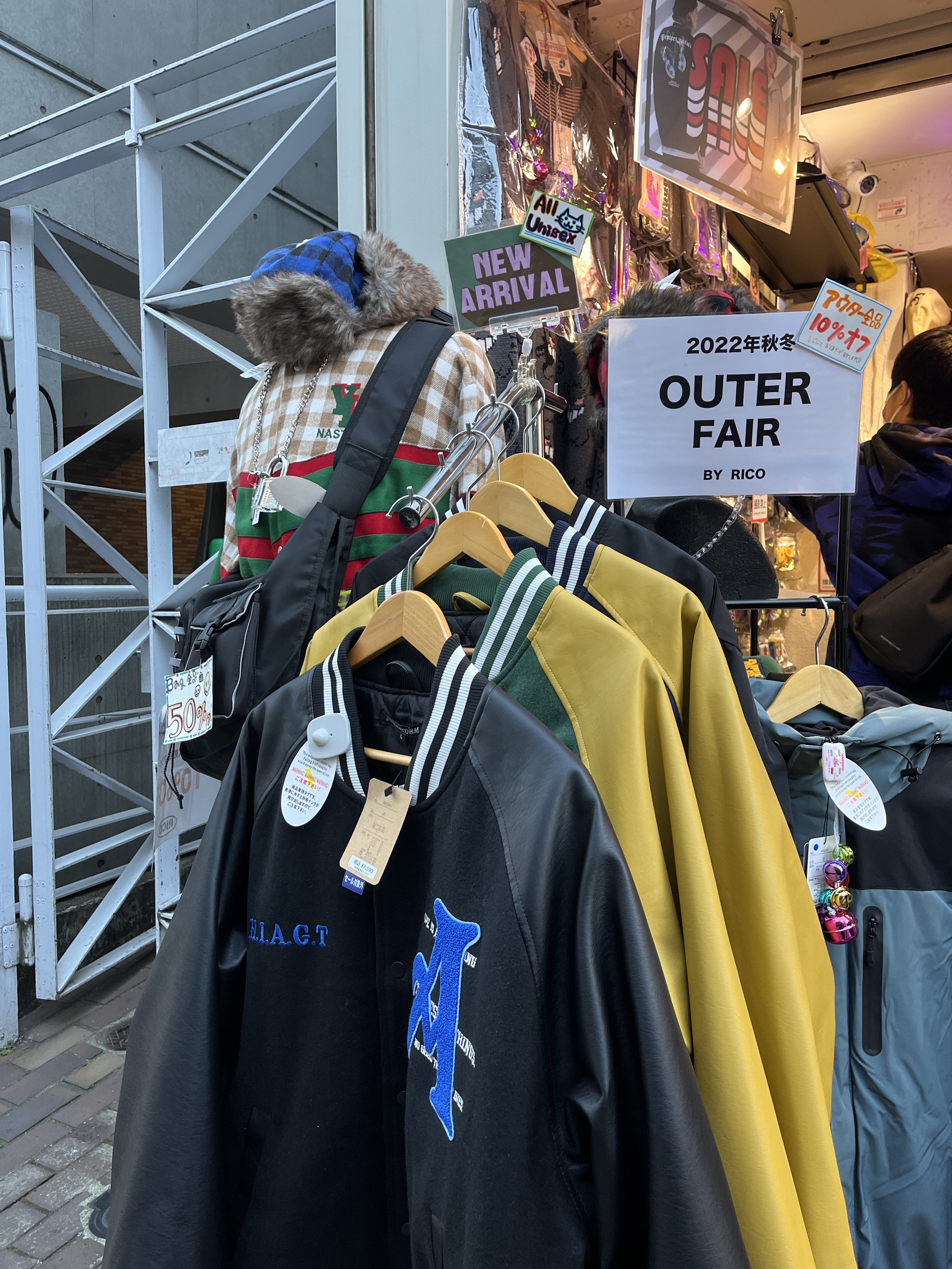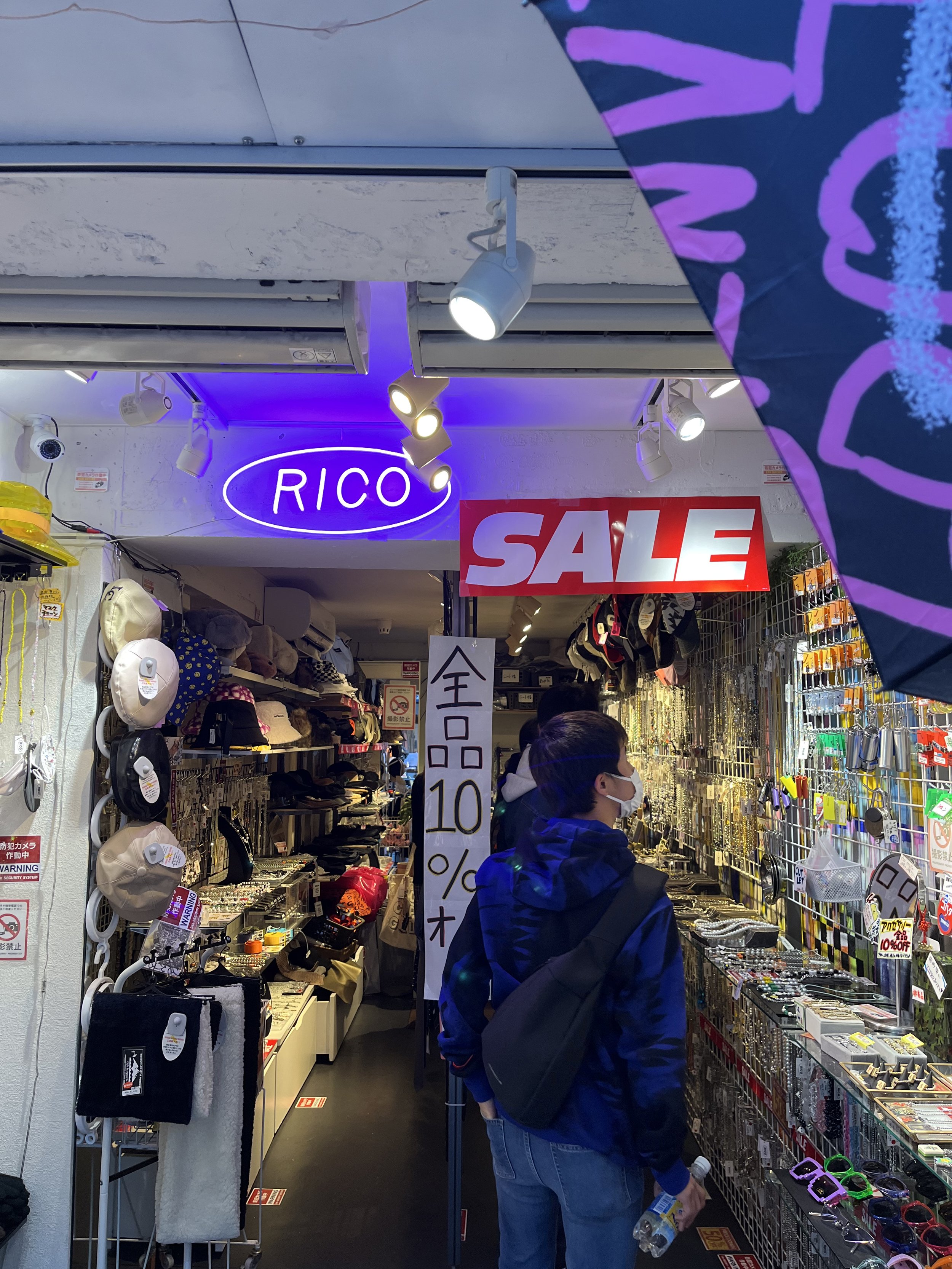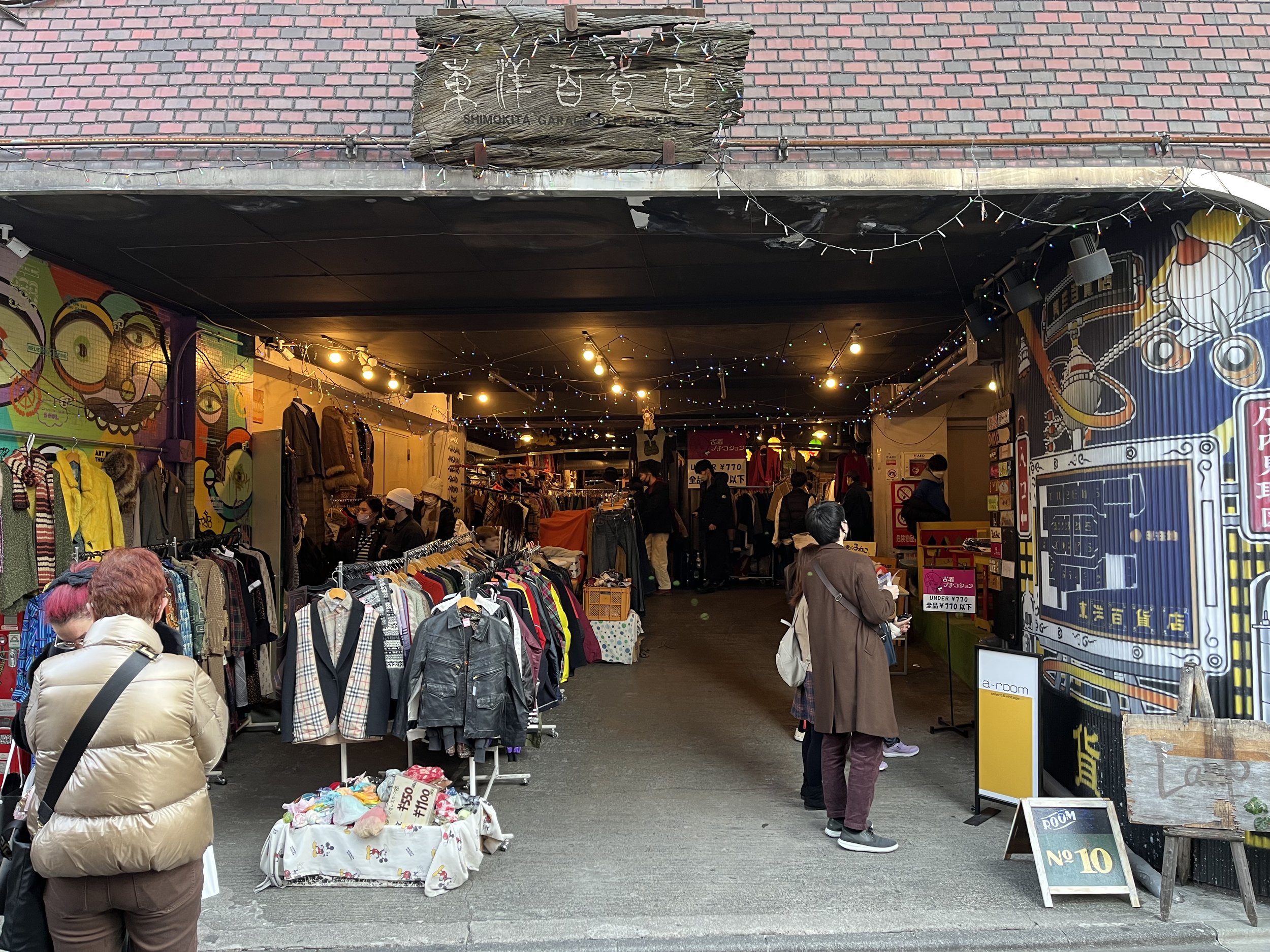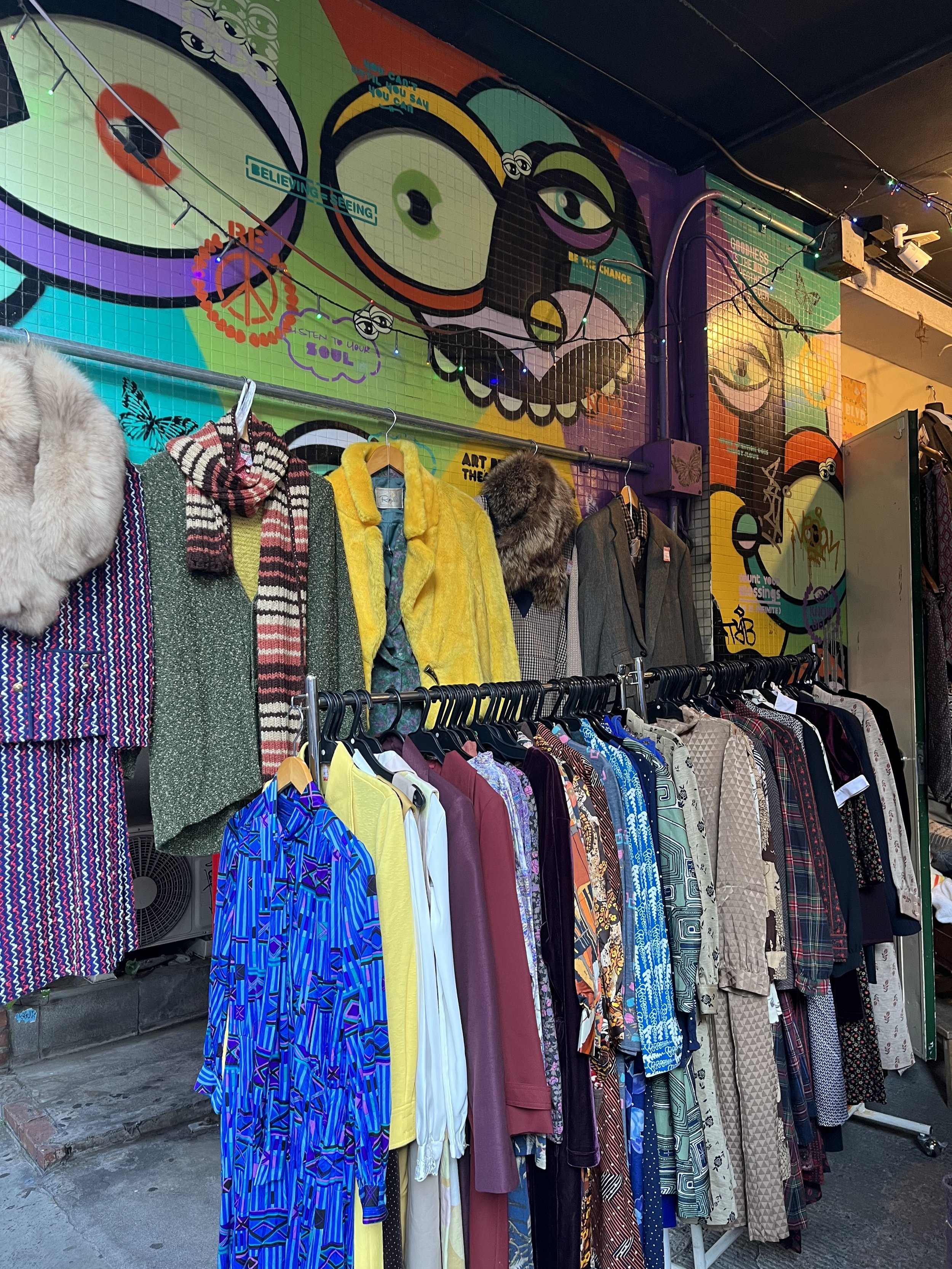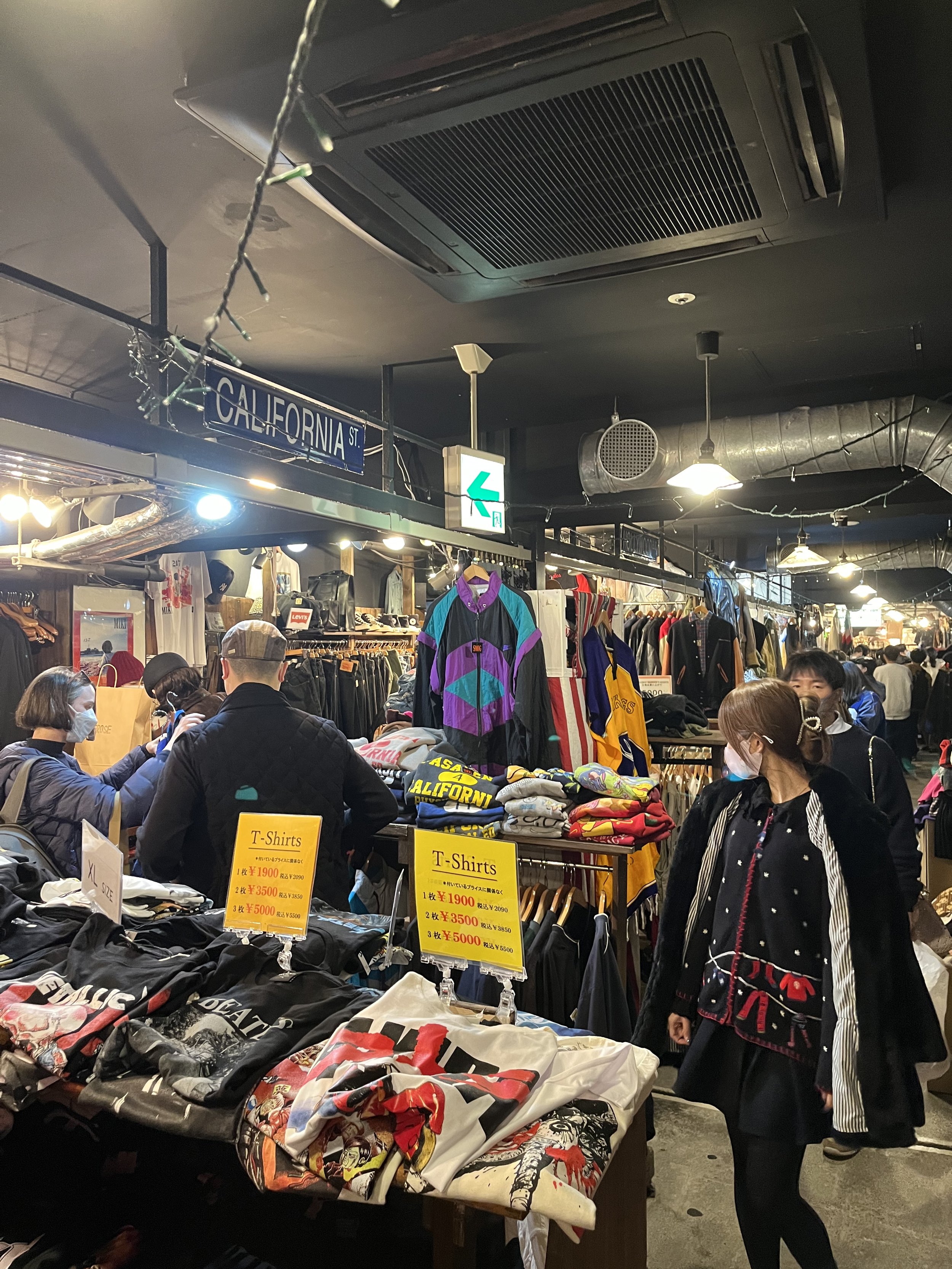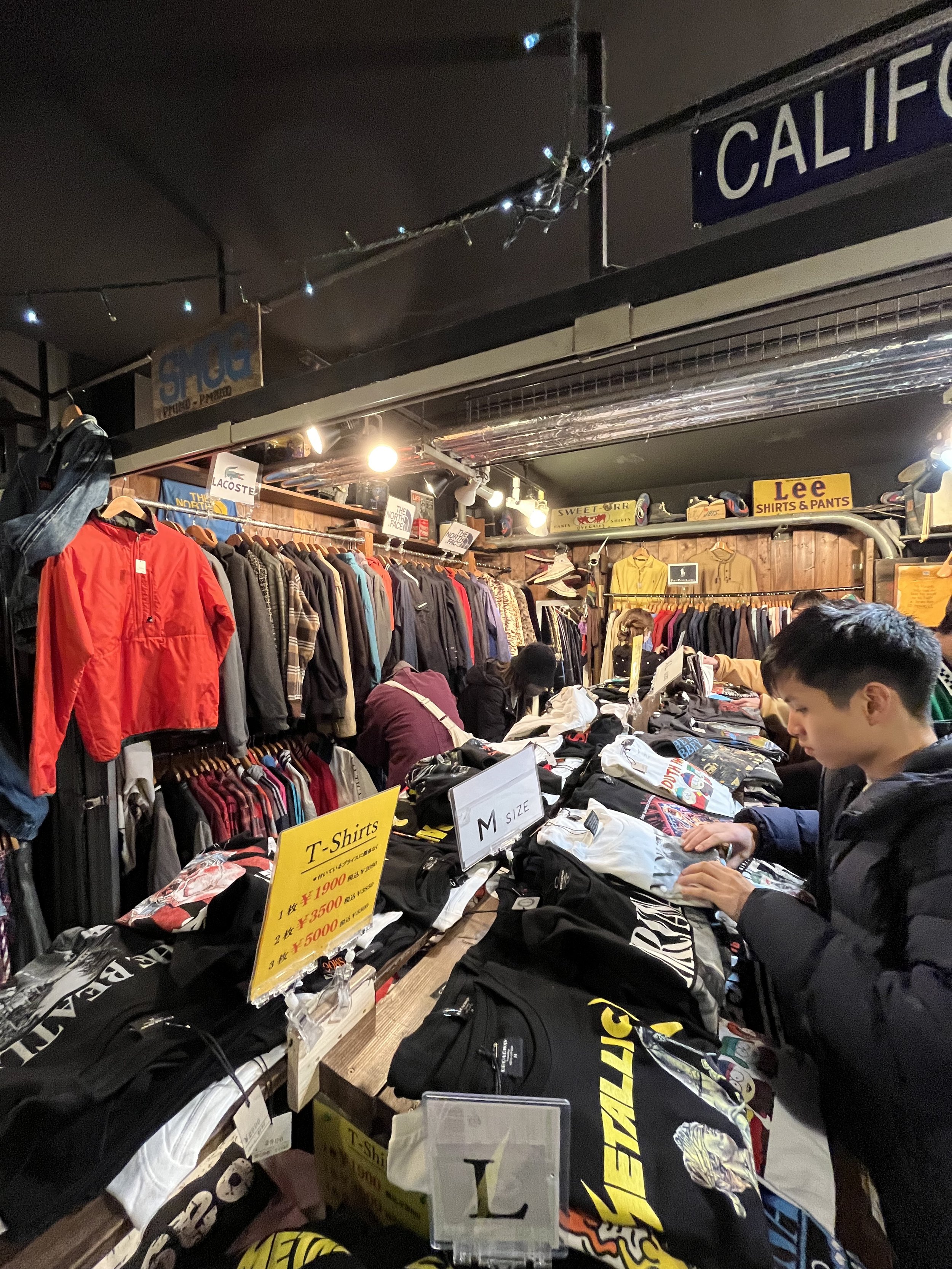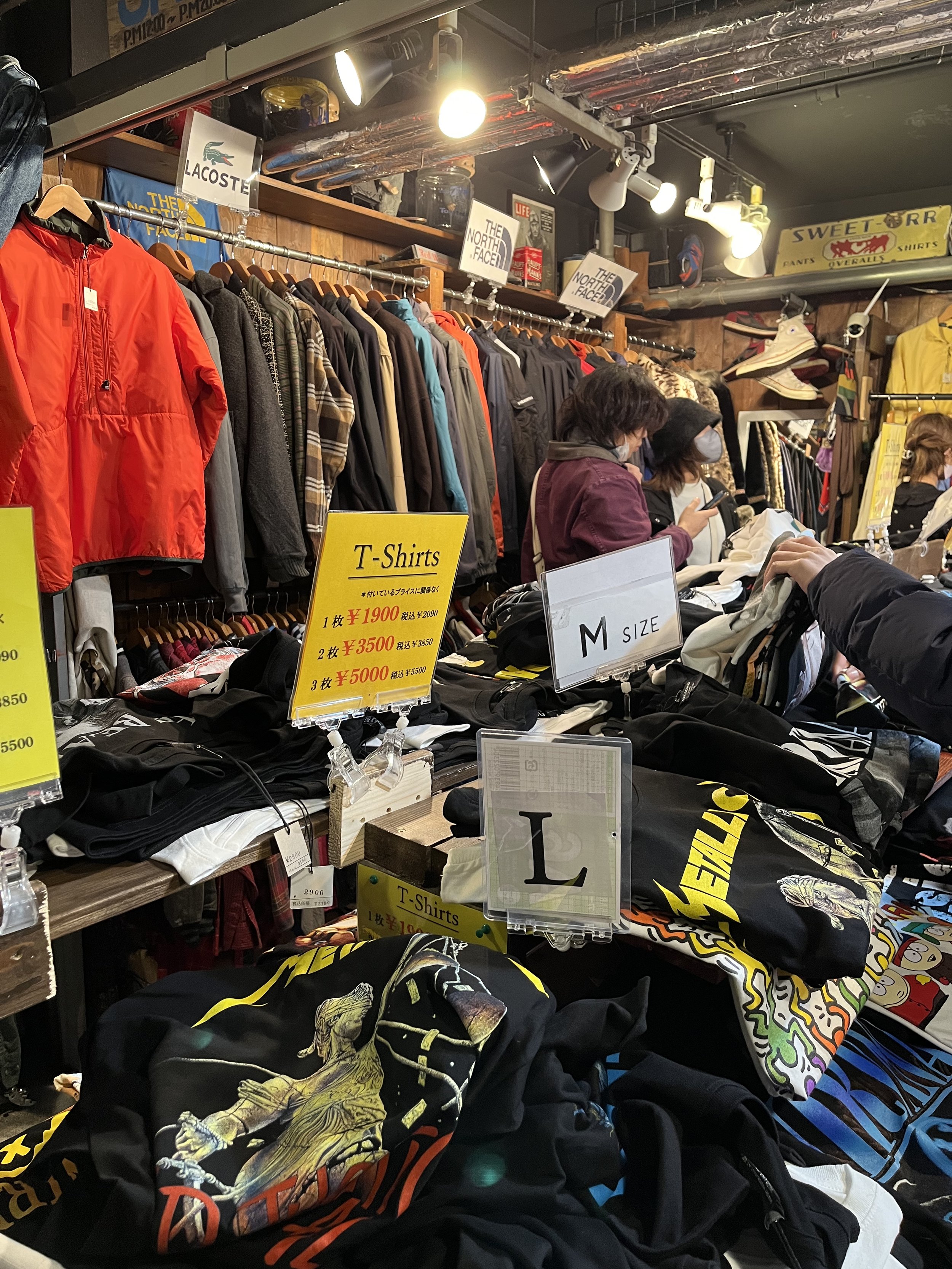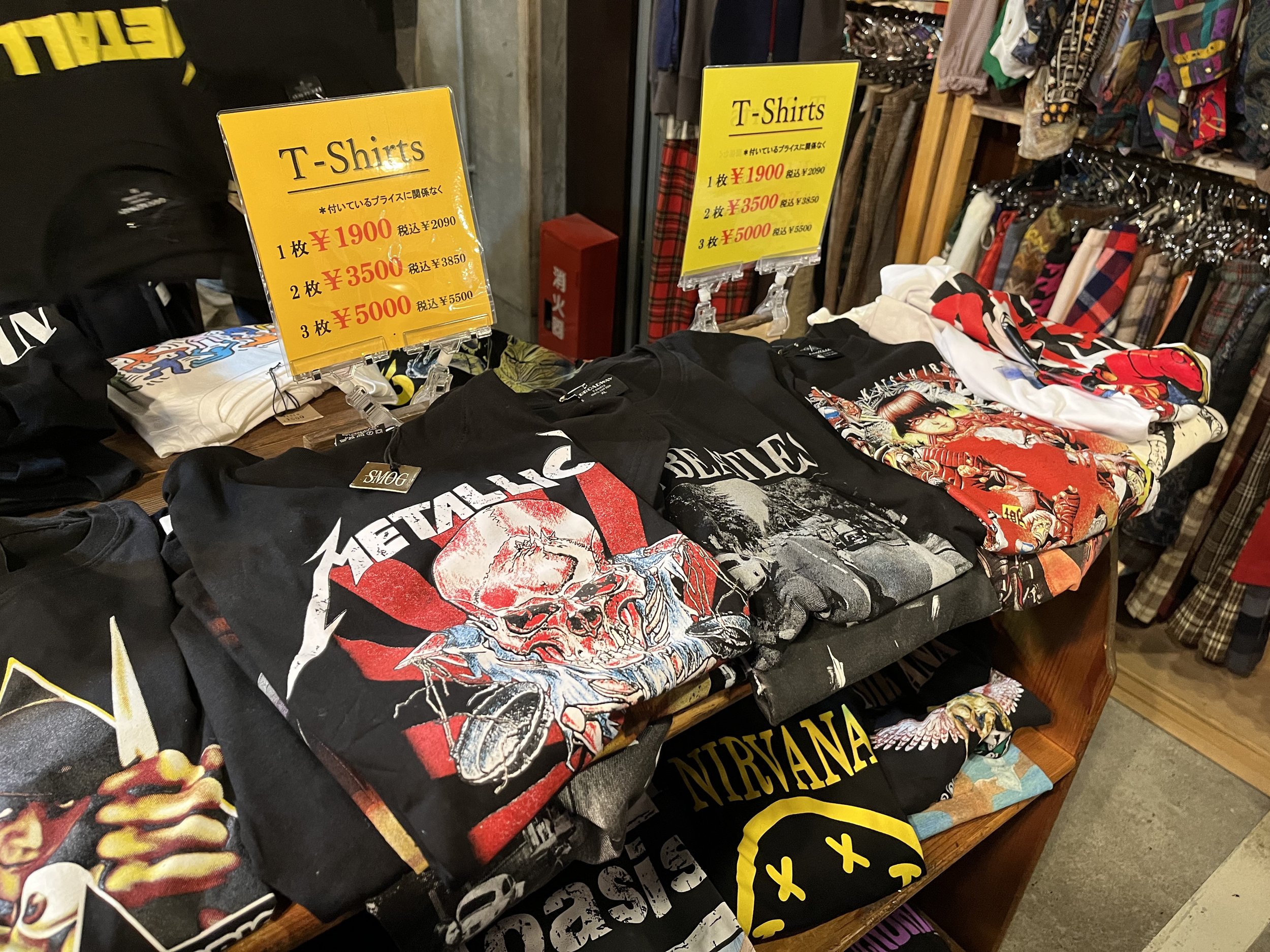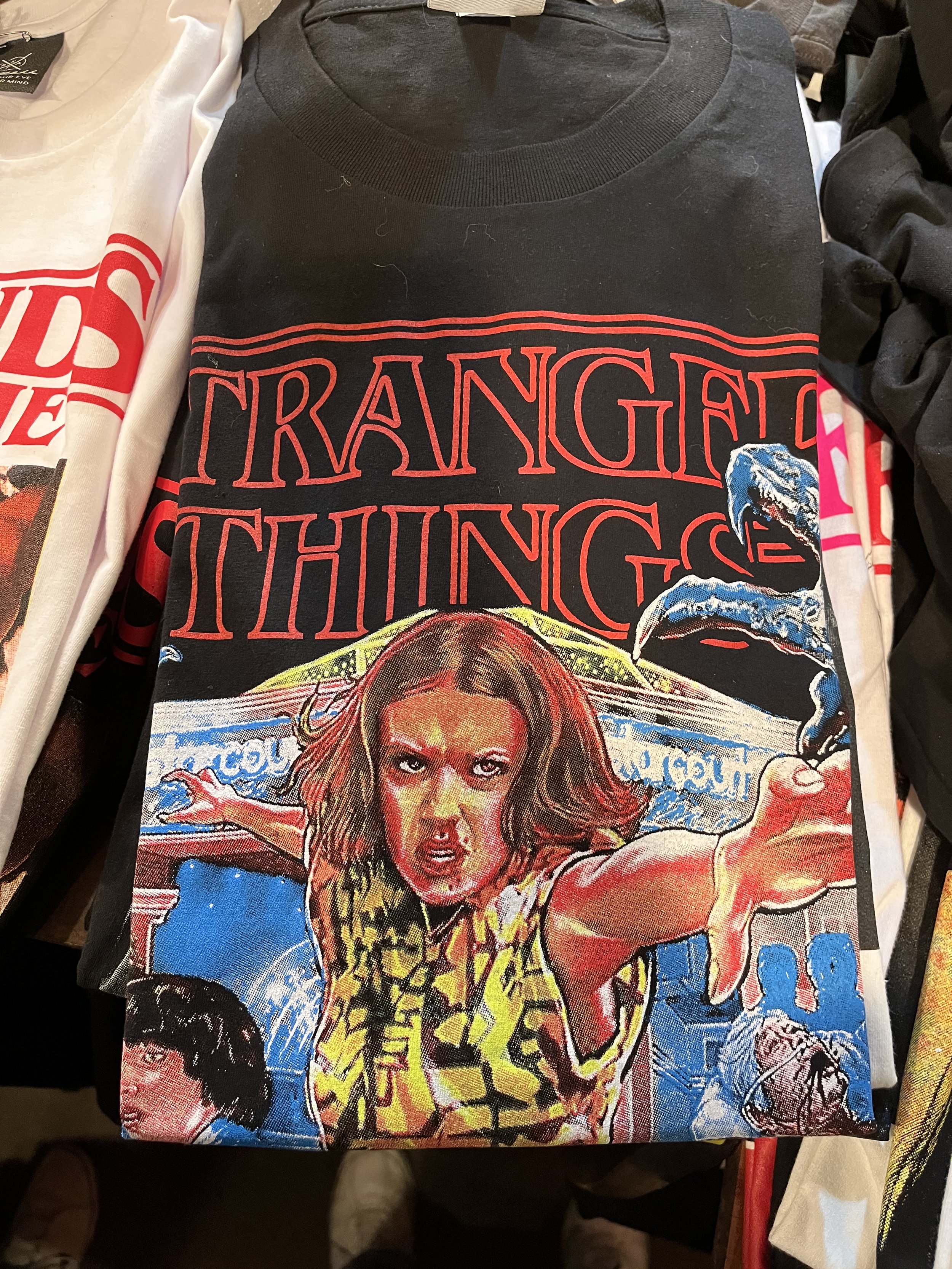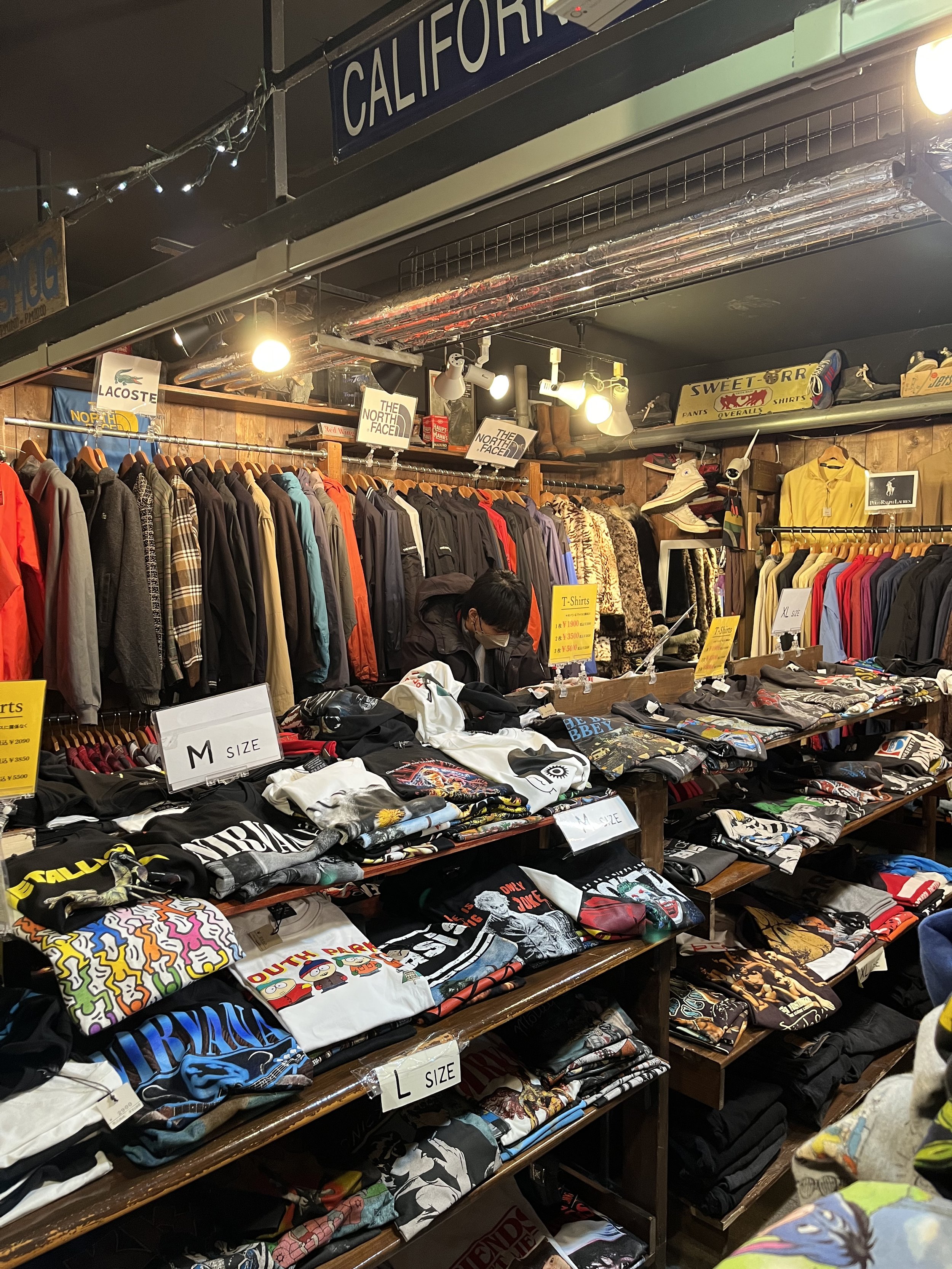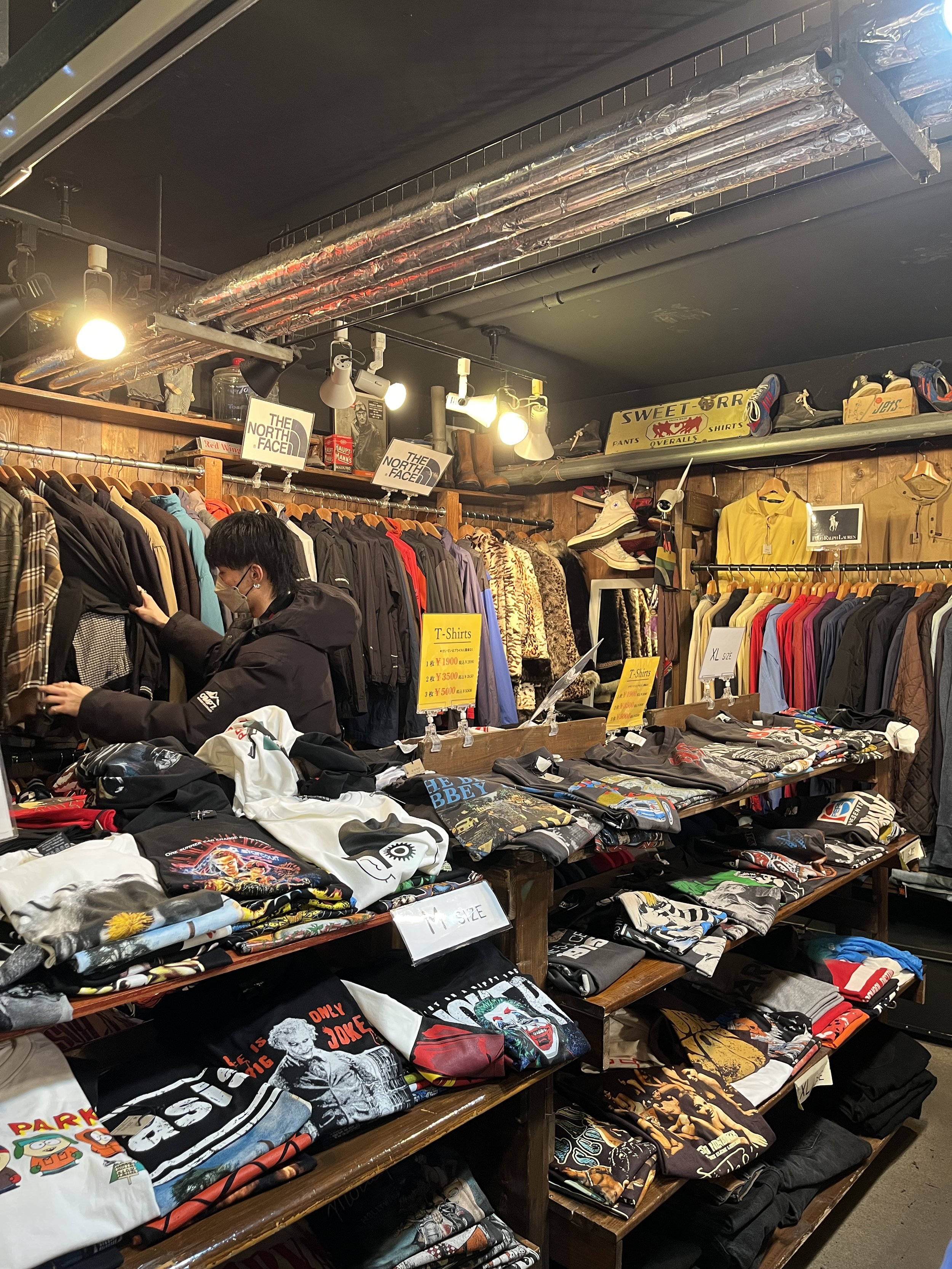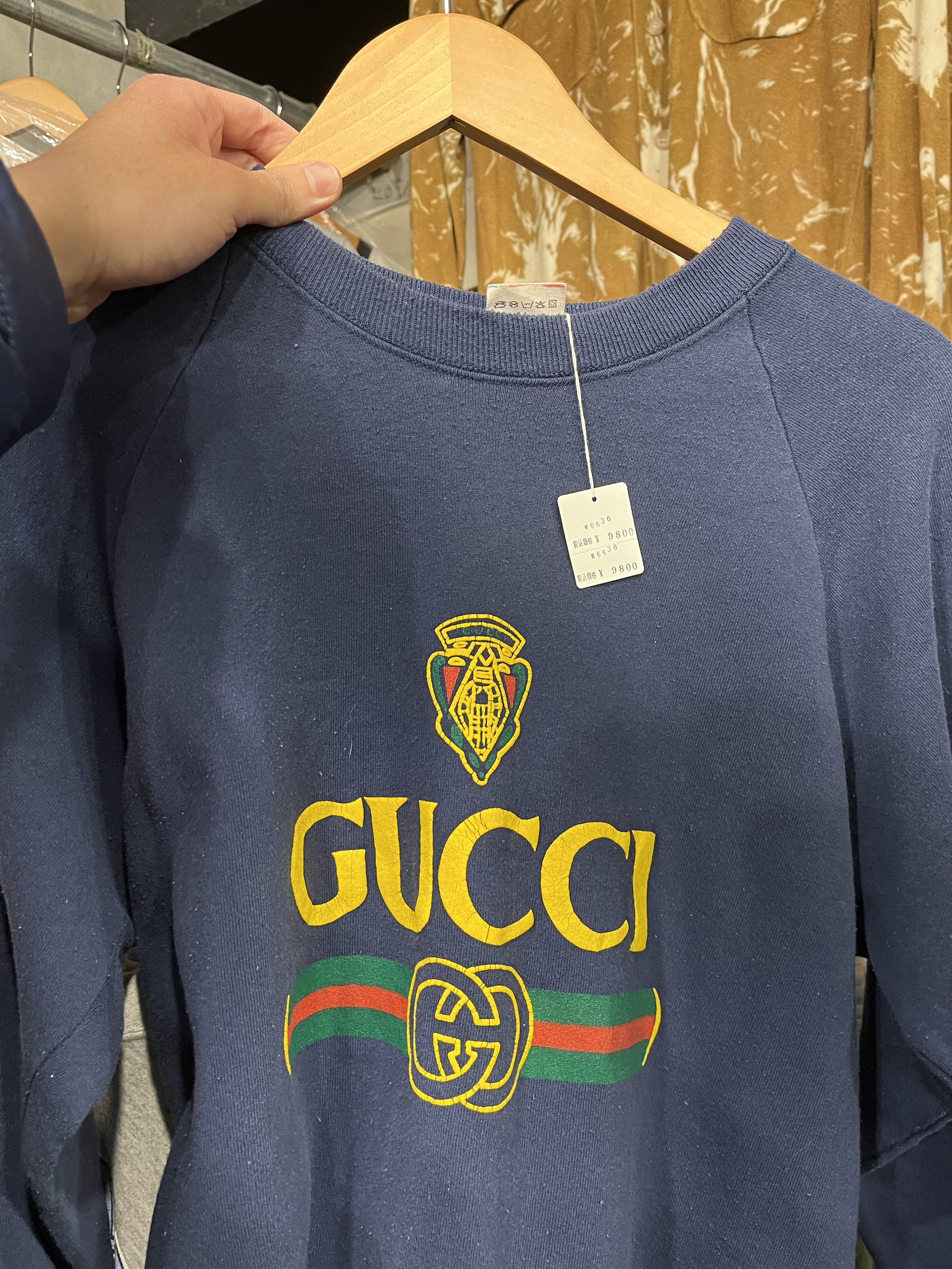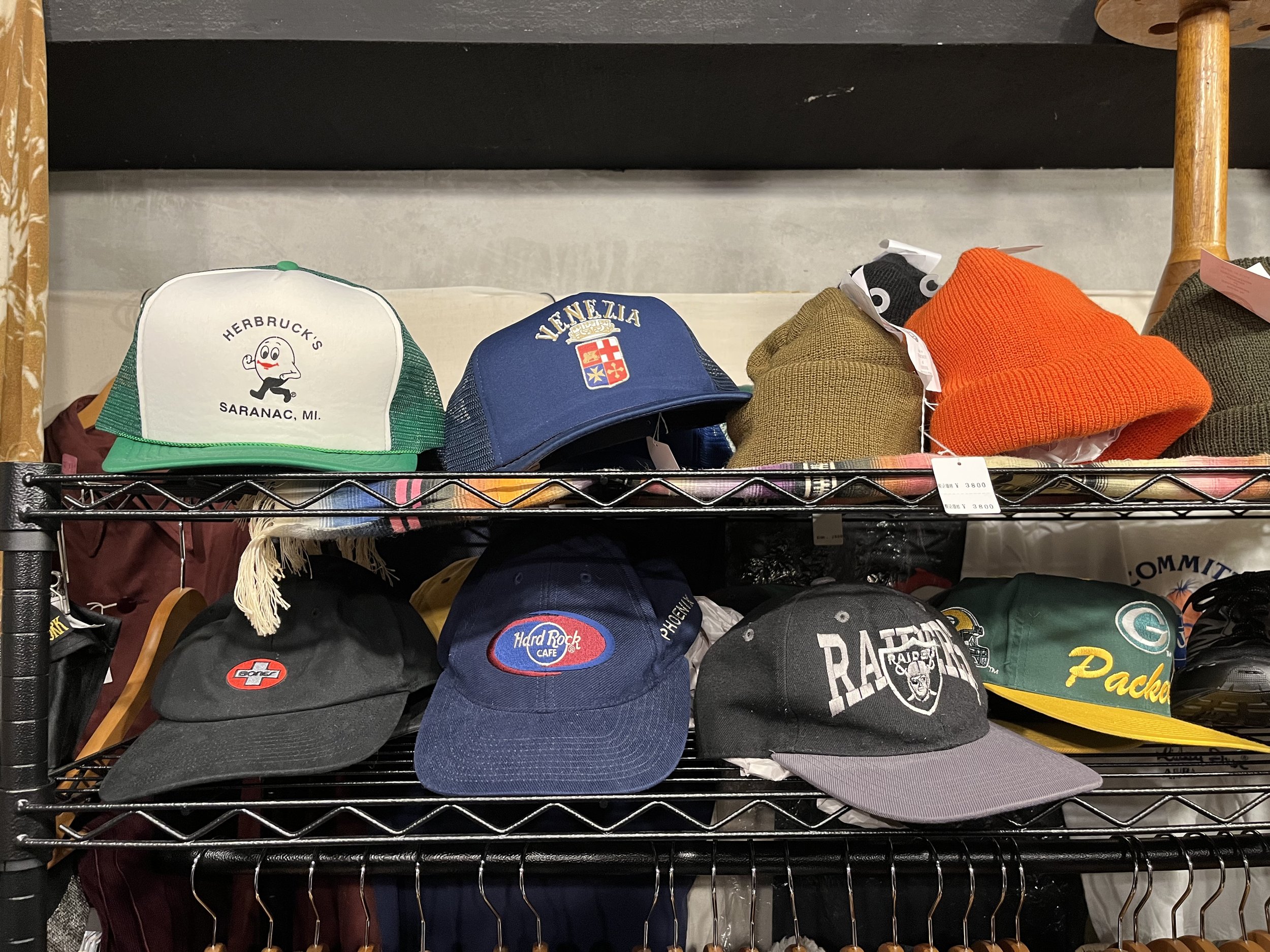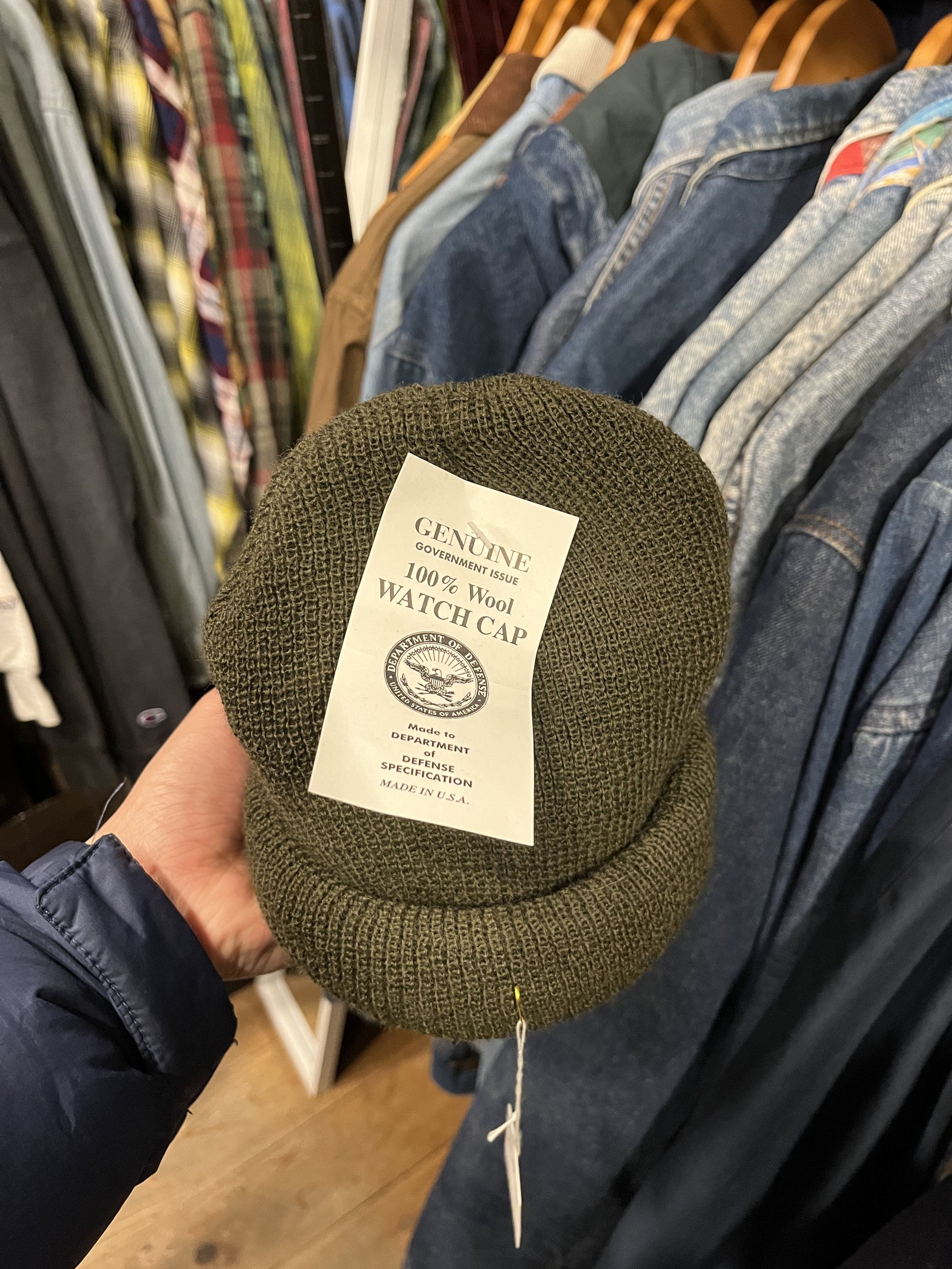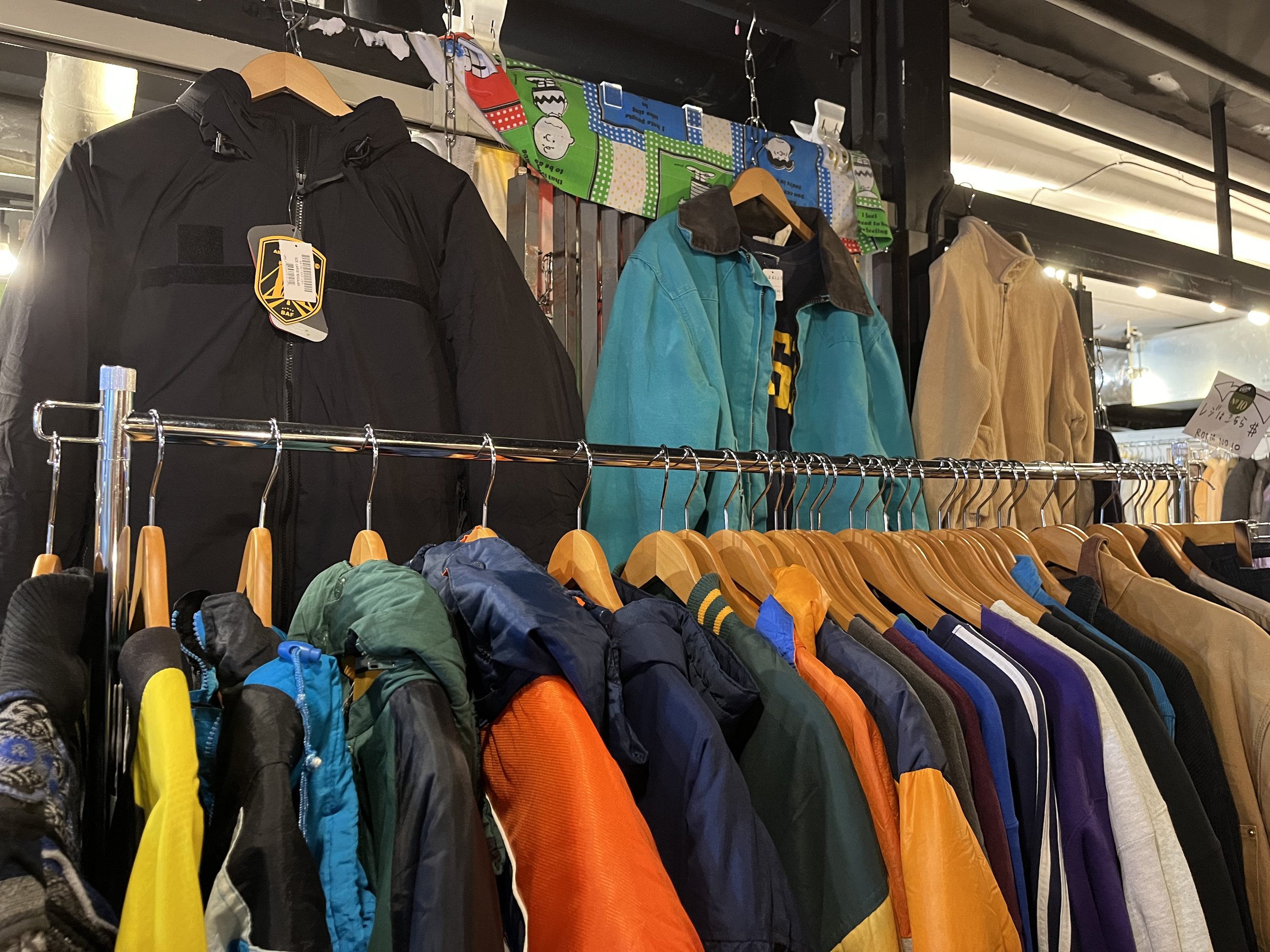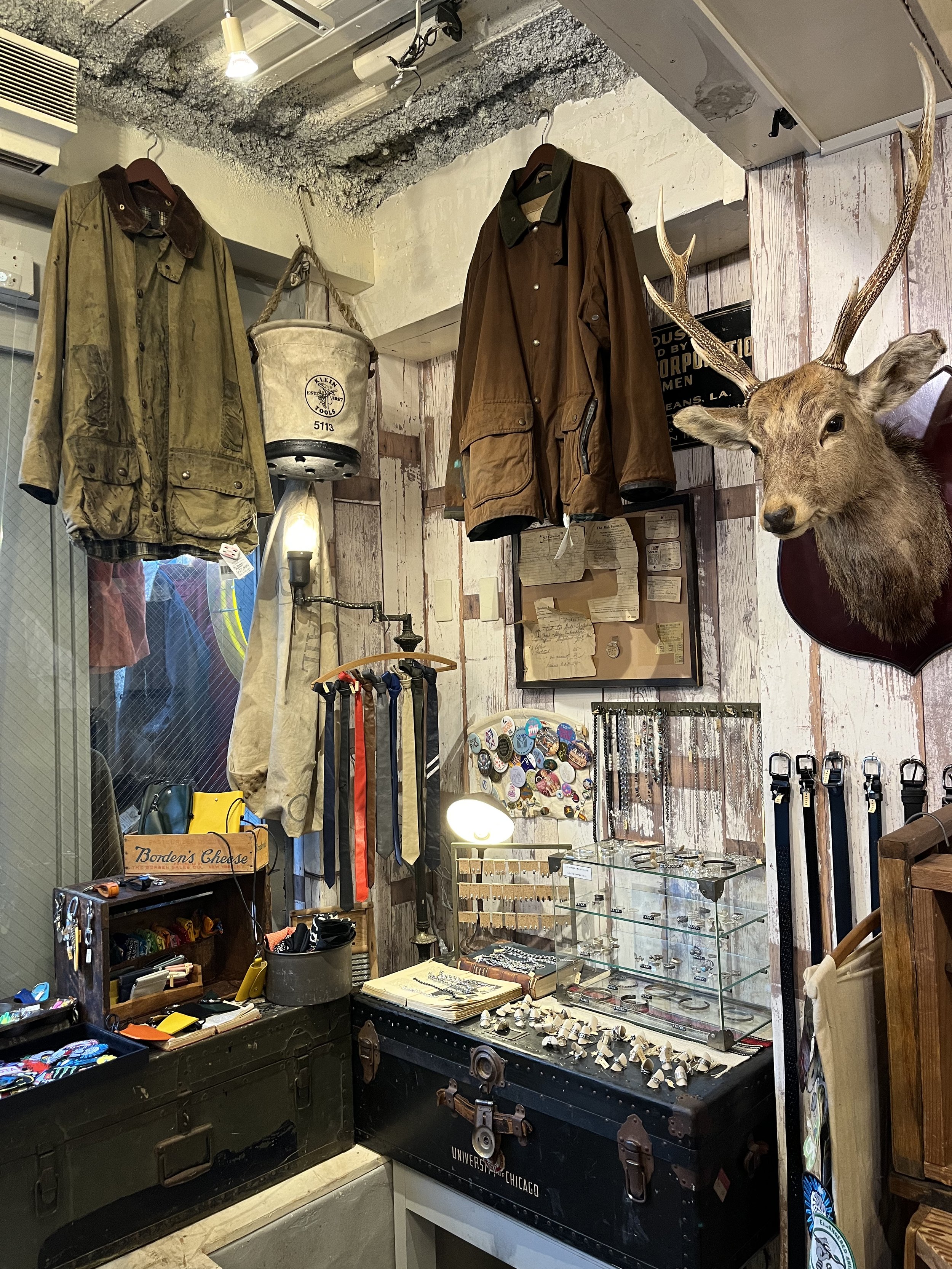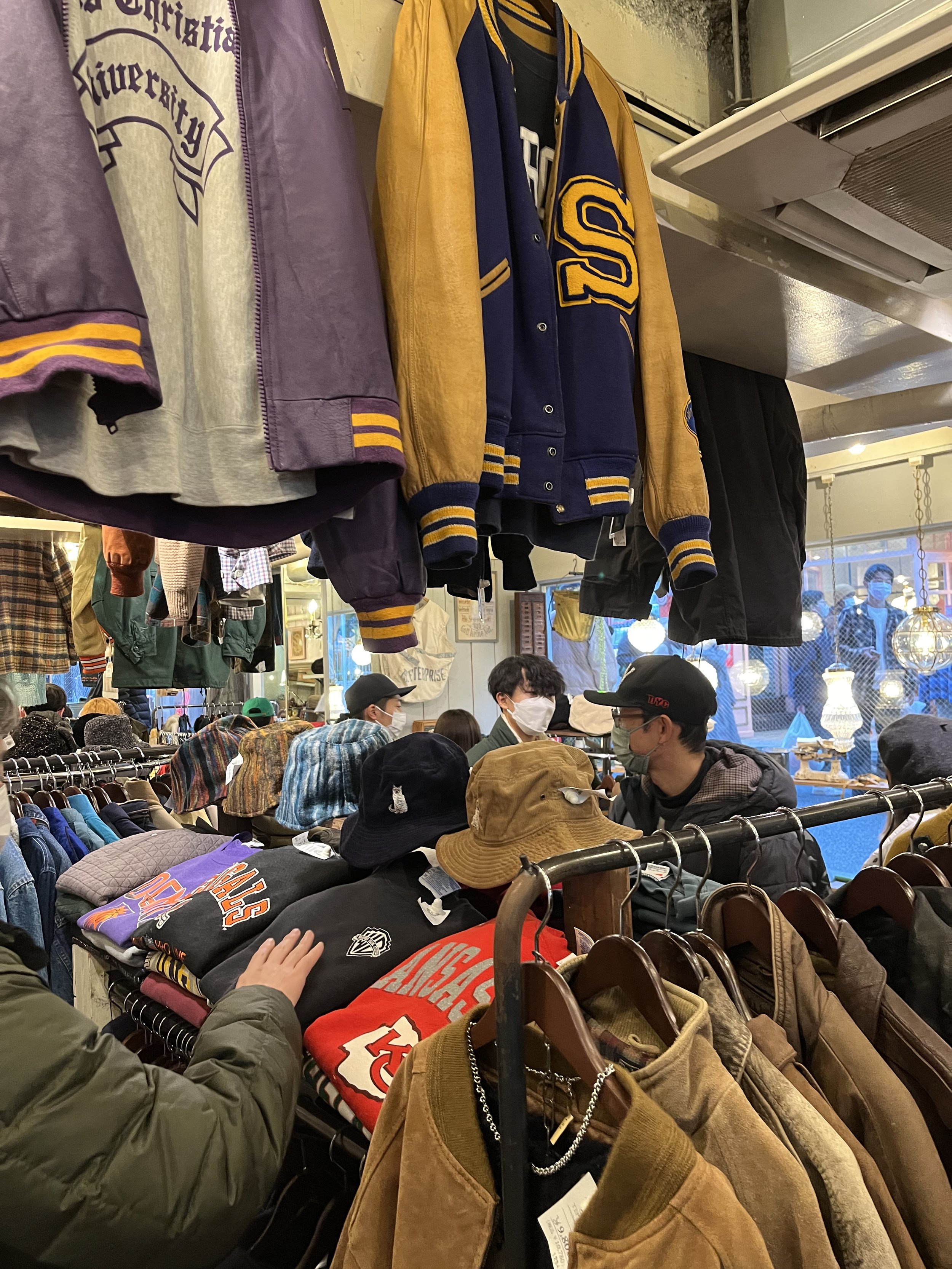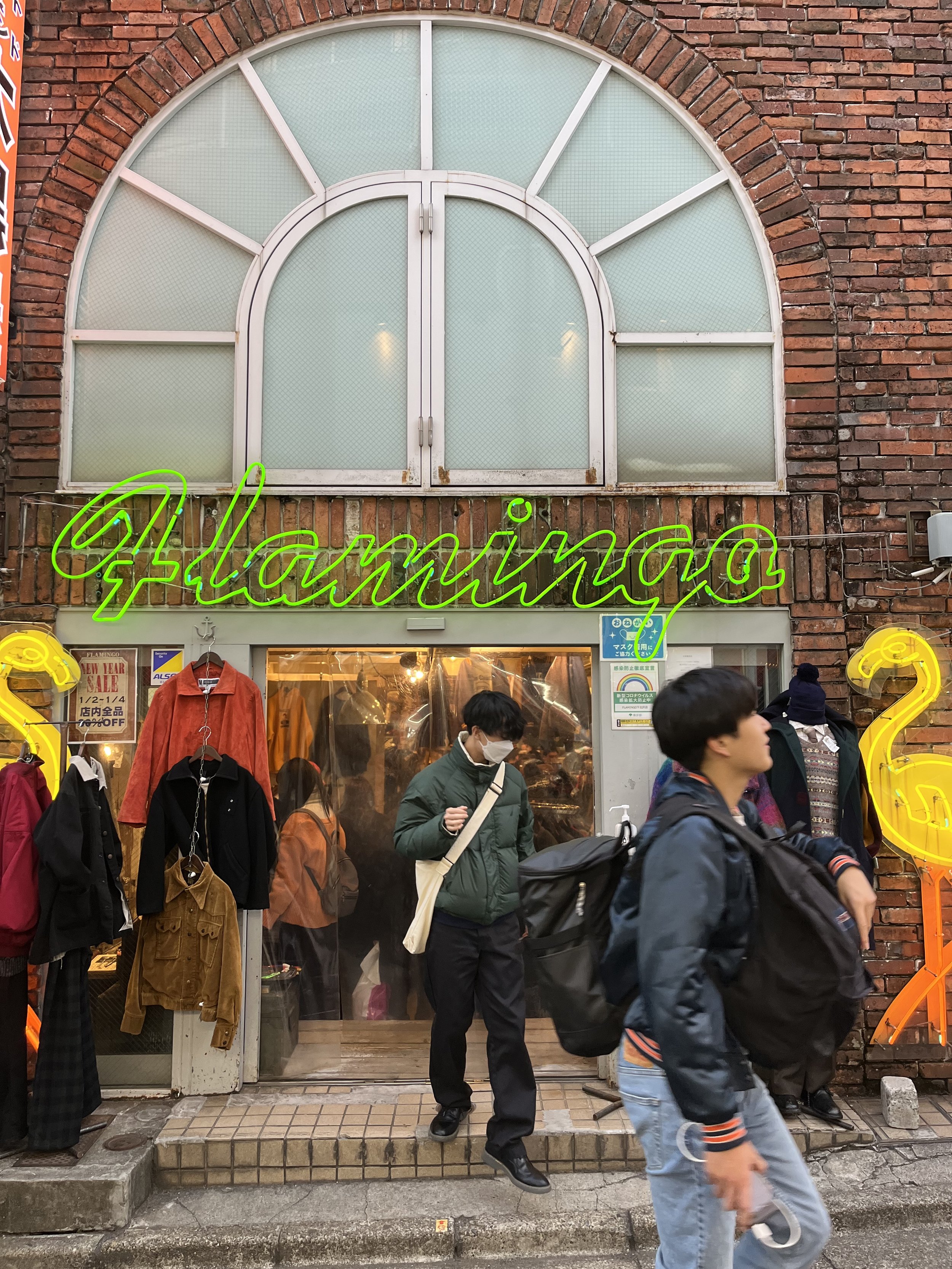New Life in the Japanese Thrift Store
Thrifting in Tokyo brings a mix of the old and the new.
Written & Photographed by Patrick Kho
Japanese designers are heavily influential in global fashion markets. Brands like Kenzo Takada’s KENZO still boast a vast network of stores worldwide, and I’m sure we all remember the relentless hype that surrounded BAPE several years ago. But as Gen Z fashion trends move beyond fast fashion and more towards purchasing clothes second-hand, what might thrifting look like in Japan?
Recommended by a Japanese friend, Shimokitazawa is just a 40 minute train ride from central Tokyo. Walk out of the station and you find yourself in a relaxed, bohemian neighborhood presenting a different side of the city—no wide roads or towering structures or packed sidewalks. Only small shops, stores, and cafes in buildings one to two stories high fill the streets of Shimokitazawa. With no LED screens or loud pop music (as you’d find in the busy crosswalks of Shibuya or Shinjuku), it’s quiet.
Shimokitazawa
But Shimokitazawa is also known as a thriving hub for Japanese youth trends and subcultures, hip cafes, and vintage boutiques. Yes, it's quiet, but streets are still packed with shoppers dressed in experimental styles (baggy clothing seemed to be particularly popular this year). They all search for the next chic, hip, and (hopefully) affordable addition to their wardrobes, because if Shimokitazawa is known for anything at all, it’s chic, hip, and reasonably priced thrift stores.
My brother and I exit Shimokitazawa station at around 3pm. Our first order of business? To visit Toyo Department Store Annex, also known as Toyo Hyakkaten. But this is no typical department store. Walls plastered with retro Japanese street art carve a wide, open entrance to a repurposed beer garage. Walk a few steps in, and on your left will be the first vintage store selling coats, jackets, and dresses from various periods, while on your right are several carved wooden signs introducing each of Toyo Hyakkaten’s twenty-something different sellers.
Toyo Department Store Annex aka Toyo Hyakkaten
We rush through the sea of shoppers inside and enter a store named Hollywood Boulevard, which boasts a collection of second-hand pieces from North Face, Patagonia, and Ralph Lauren, as well as denim and leather jackets from several lesser known brands. But most shoppers crowd around their collection of retro print t-shirts adorned with the logos Metallica, Iron Maiden, and other 80s rock bands—an archetypically ‘old-school’ American aesthetic.
Oddly, some Stranger Things prints were found within the mix.
We walk further in and visit Room no. 10, which, besides a few baggy carhartt jeans, exclusively sells second-hand items. Lined up on their hangers are Adidas tracksuits from the 80s selling for ¥8,000-10,000 (~$60-75) and woven vintage sweaters priced at ¥20,000 (~$150) and above.
Browsing some more through the hangers, I did in fact discover an exceptionally well-maintained Gucci sweatshirt being sold for ¥9,800 ($76)—as I write this, I do regret not making a purchase.
"The purpose of selling these 80s Adidas tracksuits, a Gucci crewneck, and woven sweaters went beyond profiting off used items: a sale meant a chance at new life."
In Shimokitazawa, quality was a precursor to thrifting. These pieces were masterfully maintained, and store owners rightly charged a higher price. None of these items were dusty. Trying on these second-hand clothes was a shockingly un-itchy experience (this has not been the case when I had fitted clothes in Goodwill and Salvation Army!). The purpose of selling these 80s Adidas tracksuits, a Gucci crewneck, and woven sweaters went beyond profiting off used items: a sale meant a chance at new life.
But how does this contend with those funny, retro-for-pretend Stranger Things t-shirts in the previous store? Perhaps to those selling and buying brand new pieces made to look old, ‘vintage’ simply became an aesthetic to pursue rather than the natural consequence of selling second-hand items. Were they abandoning the central mantra of thrifting—the rebirth and revival of previously used clothing?
Flamingo, the Shimokitazawa branch of a popular Japanese thrift store chain, seemed to provide some answers. Inside, shelves of vintage-style sweaters, leather jackets, and bucket hats—both new and genuinely second-hand—are held within wooden walls with crumbling white paint. Near the exit of the store, a deer’s head protrudes from the right. But decorations aside, varsity jackets seem to be the star of the show: all hung near the ceiling, all baggy in size (I could not find a size smaller than ‘L’) and adorned with the logos of iconic American sports teams and universities (including the Green Bay Packers and Louisiana State University, for example).
"It’s looking at fashion photos from the 80s, our aunt or uncle’s closets, or deeply analyzing the costume designs of Stranger Things with nostalgia towards times we never lived."
Walking in the streets adjacent to Flamingo makes one thing clear: varsity jackets are in. Right outside Flamingo, shoppers stroll around the district in these oversized outer layers emblazoned with American iconography. And it’s a perfect complement to the oversized pants that have become characteristic of post-2020 fashion.
But varsity jackets especially represented the same retro-for-real vs. retro-for-pretend tension found in Toyo Hyakkaten. Walk through the rest of Shimokitazawa’s streets and beside every single store selling genuinely well-preserved, second-hand varsity jackets are also stores selling similar pieces only made to look like they were from my uncle’s closet.
And within individual stores themselves, a preserved leather jacket from the 80s could be hung beside a pair of carhartt jeans that had just arrived from the U.S. the night before.
Where does thrifting go from here? It’s clear that within (and likely beyond) the narrow streets of Shimokitazawa, to ‘thrift’ has come to represent more than just a purchase of a well-maintained second-hand piece. Stores—all of which operated within the umbrella of ‘thrifting’—were simultaneously selling clothes both secondhand and brand new.
But is this necessarily a bad thing? At its core, this is simply a way to leverage the popularity of the vintage, retro, and ‘thrifted’ aesthetics to sell in ways that might realistically compete against the fast-fashion giants.
In the case of Shimokitazawa, an evolving fashion landscape has transformed the experience of thrifting. Perhaps within these narrow streets is thrifting redefined. It becomes more than just an activity involving old clothing, more than purchasing a previously loved good: it’s a subscription to an aesthetic. It’s looking at fashion photos from the 80s, our aunt or uncle’s closets, or deeply analyzing the costume designs of Stranger Things with nostalgia towards times we never lived. It’s carrying this nostalgia in clothing we choose to wear, whether second-hand or newly manufactured.
Patrick Kho is based in New Haven, CT and Hong Kong. Follow him on Instagram @patrickkh0.








